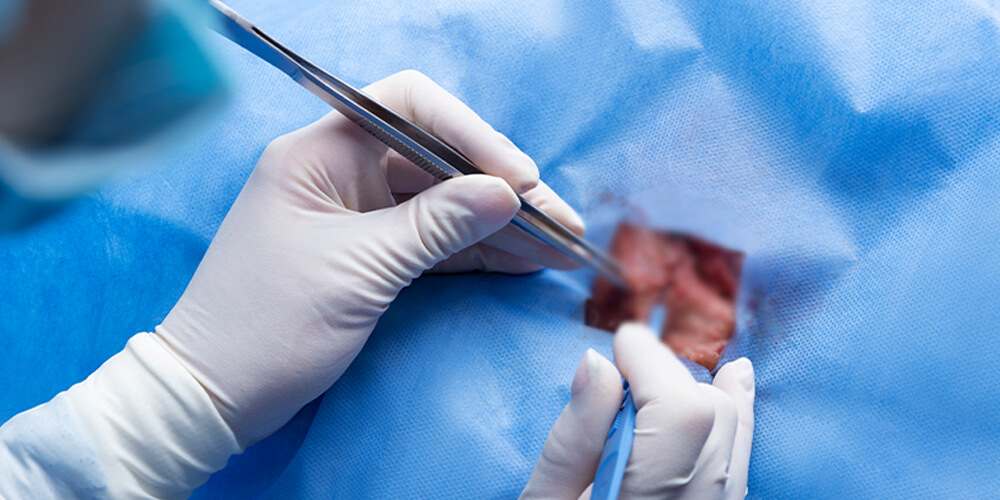Home » Non-Surgical Cyst Treatments 2024

Cysts are sac-like structures filled with liquid, air, or other substances. They can form in various parts of the body and are often harmless. However, their presence can cause discomfort, pain, and cosmetic concerns. For those seeking relief without undergoing surgery, non-surgical cyst treatments provide effective alternatives. This article delves into various non-surgical cyst treatments, highlighting their benefits, methods, and effectiveness.
A cyst is a closed capsule or sac-like structure, typically filled with liquid, semisolid, or gaseous material. Cysts can appear anywhere on the body and can vary greatly in size. They are generally benign but can sometimes cause discomfort or become infected.
There are many types of cysts, including:
Applying a warm compress can help reduce the discomfort and promote drainage of the cyst. The heat increases blood circulation, which can accelerate the healing process.
How to Use:
Tea tree oil has antimicrobial properties that can help reduce the risk of infection. It can be particularly effective for sebaceous cysts.
How to Use:
Aspiration involves using a needle to drain the fluid from the cyst. This procedure is typically done under local anesthesia and is often used for larger cysts.
Procedure:
Corticosteroid injections can help reduce inflammation and shrink the cyst. This treatment is often used for ganglion cysts and other inflammatory cysts.
Procedure:
Laser therapy involves using focused light to shrink or eliminate the cyst. This method is less invasive and can be effective for certain types of cysts, such as sebaceous cysts.
Procedure:
Aloe vera has anti-inflammatory properties and can help soothe the skin and reduce cyst size.
How to Use:
Witch hazel is known for its astringent properties, which can help shrink cysts.
How to Use:
Turmeric
Turmeric has anti-inflammatory and antibacterial properties, making it effective for cyst treatment.
How to Use:
Make a paste with turmeric powder and water.
Non-surgical cyst treatments are less invasive compared to surgical options. They do not require incisions or stitches, reducing the risk of complications and scarring.
Many non-surgical cyst treatments, such as home remedies and over-the-counter products, are cost-effective and easily accessible.
Non-surgical treatments can often be performed at home or in a clinical setting with minimal disruption to daily life. This makes them a convenient option for many individuals.
Since non-surgical treatments do not involve invasive procedures, the recovery time is typically shorter. Patients can often resume normal activities shortly after treatment.
If a cyst is persistent, growing, or causing significant pain, it is important to seek medical advice. Non-surgical treatments may not be effective in such cases.
Signs of infection, such as redness, warmth, and pus, require immediate medical attention. Infected cysts may need antibiotics or surgical drainage.
If there is any uncertainty about the nature of the lump, consulting a healthcare professional for a proper diagnosis is crucial. Some cysts can resemble more serious conditions that require different treatments.
In recent years, the medical field has witnessed significant advancements in non-surgical cyst treatments, providing patients with more options and improved outcomes. One notable approach is the utilization of medication to manage cysts effectively. Depending on the type and severity of the cyst, healthcare providers may prescribe antibiotics, anti-inflammatory drugs, or hormonal medications to alleviate symptoms and promote healing.
Antibiotics are commonly prescribed for cysts that are infected or at risk of infection. By targeting the underlying bacterial infection, antibiotics can help reduce inflammation, pain, and the risk of complications. Anti-inflammatory drugs, such as ibuprofen or corticosteroids, are effective in minimizing swelling and discomfort associated with cysts, offering symptomatic relief while allowing the body’s natural healing processes to take place.
For cysts influenced by hormonal imbalances, hormonal medications may be recommended to regulate hormone levels and prevent further cyst development. Birth control pills, for instance, are often prescribed to women with ovarian cysts to regulate their menstrual cycles and reduce the likelihood of new cysts forming. By addressing the root cause of hormonal fluctuations, these medications can help manage existing cysts and prevent recurrence.
It is important to note that while non-surgical cyst treatments can be highly effective, they may not be suitable for all cases. In some instances, surgical intervention may be necessary to remove large or complex cysts or to address underlying medical conditions. Additionally, certain cysts, such as those located in vital organs or deep tissues, may require specialized care from a multidisciplinary team of healthcare providers.
In conclusion, non-surgical cyst treatments offer a diverse range of options for individuals seeking relief from cyst-related symptoms without undergoing surgery. From medication and minimally invasive procedures to innovative technologies, these treatments provide effective solutions for managing cysts and improving quality of life. By working closely with healthcare professionals to explore non-surgical options, individuals can find personalized treatment plans that address their unique needs and preferences, ultimately achieving optimal outcomes and long-term relief from cyst-related symptoms.
Hello!